Following the Grenfell tragedy, root and branch change has been demanded across construction practice and the regulatory landscape has consequently been in a state of evolution. Against the backdrop of a raft of updates in legislation and building regulations, as well as multiple Advice Notes addressing fire safety in the external envelope of buildings, industry stakeholders and BSI recently published a new British Standard for balcony design; BS8579:2020. We spoke to Richard Izzard, managing director of aluminium decking manufacturer AliDeck, to find out more.
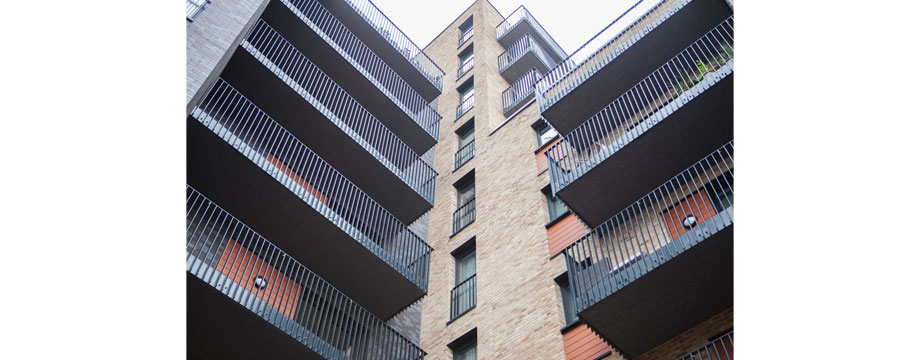
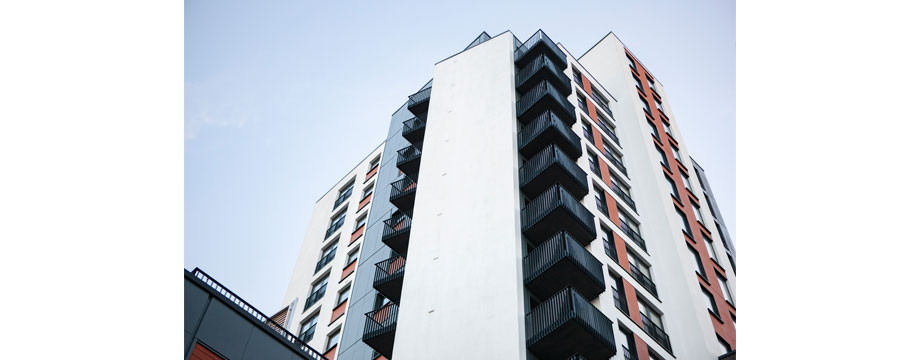
AliDeck’s range of aluminium balcony components systems
are A-Rated and non-combustible.
With the recent major changes in legislation and building regulations, a need for greater clarity for constructors, designers and manufacturers was identified to harmonise approaches to safety, longevity, inclusive access, and more.
Balconies were defined as specified attachments to the external envelope of buildings by the Government in 2019, but it quickly became apparent that major gaps in understanding existed on how to achieve compliance in balconies. Accordingly, BSI and key stakeholders came together to formalise best practice and outline key guidance.
BS8579:2020 (Guide to the design of balconies and terraces) is the result. This British Standard aims to set a benchmark for quality and functionality in the design of balconies, terraces and their component parts.
Richard Izzard, managing director of aluminium decking manufacturer AliDeck, said “We have embraced this new Standard as it provides a clear baseline for manufacturing, design, and construction excellence in balconies specifically. The guidance it contains is clear, concise, and very much the answer to achieving safe balcony design.”
Achieving Compliant Balcony Design for BS8579:2020 with AliDeck
A crucial aspect of any balcony is the flooring element and BS8579:2020 provides substantial guidance on achieving excellent design outcomes. Termed within the Standard as the pedestrian surface, a range of issues relating to safety and functionality within this “uppermost trafficked surface” are explored and defined.
Primarily, BS8579:2020 is concerned with the safe, comfortable and functional use of the balcony pedestrian surface and it identifies several considerations for achieving this, including; drainage, deflection, and fire safety.
“For the first time ever, specifiers have a detailed guide to key concerns particular to the balcony or terrace deck surface,” commented Richard. “The issue of balcony drainage, for example, is a big step forward, with free-draining balconies now effectively ruled out.”
BS8579:2020 provides comprehensive instruction on designing effective drainage into a balcony. The Standard states that the design of a balcony should consider the safety of persons below, and that the risk of objects, liquids, and fire brands falling beneath the balcony should be minimised.
The Standard outlines a requirement that free draining balconies should be avoided, for safety and comfort factors. Two alternative options for compliant balcony drainage are presented;
• Edge drainage
• Piped drainage (also referred to as Positive Drainage)
“With free-draining balconies now no longer compliant, specifiers must consider appropriate water management systems,” Richard explained.
“For our decking range, AliDeck has developed a comprehensive balcony drainage system that comprises a between-board drainage channel and a perimeter gutter. This delivers piped drainage to the balcony and allows for full control of wastewater.”
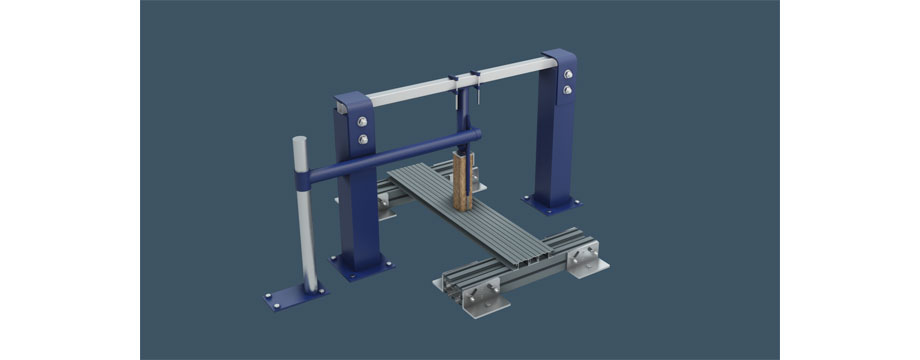
AliDeck’s range of decking boards have been deflection
tested to ensure performance under a static 2kN point load.
“In our balcony soffit cladding line we have AliClad Flow and this solution captures water as it travels through the balcony and diverts it to a perforated gutter at the front of the balcony for effective edge drainage,” continued Richard. “The choice of either of our drainage options guarantees compliance with both BS8579:2020 and NHBC Standards 2021.”
Another key design area that BS8579:2020 shines a light on is the acceptable deflection in the deck surface. Previously, the deflection of the deck surface was not directly addressed in any guidance so manufacturers had to apply loading best practices from as near-related materials as possible.
BS8579:2020 states that “for occupant comfort” the balcony pedestrian surface should not deflect more than 5mm under a static 2kN point load.
“We formerly relied on applying the loading and deflection criteria from a range of British Standards, but none of these gave clear instruction on how decking boards should perform under load,” said Richard.
“We have tested our range of decking boards to the BS8579:2020 criteria and were very pleased with the results, with all of our boards performing well within this new requirement.”
Clear guidance on practical concerns such as drainage and deflection is certainly to be welcomed, but the new Standard also gives crucial instruction on achieving fire safety in balconies.
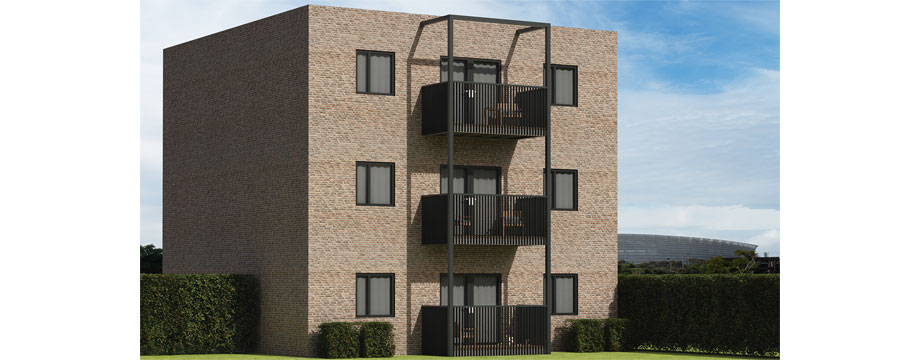
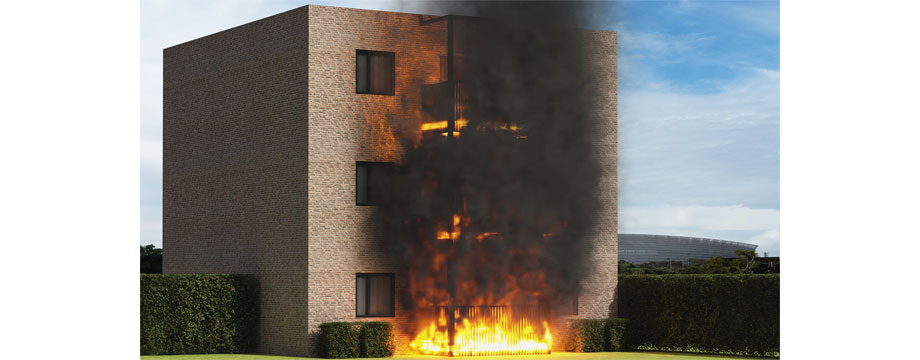
British Standard BS8579:2020 states that stacked balconies
must be designed with non-combustible materials.
“Fire safety is the key issue of our times,” exclaimed Richard. “Following the Grenfell tragedy there has been vast change in construction practice and materials specification and these necessary changes have done much to move us to a fire safe future.”
“BS8579:2020 reiterates the requirement of all materials used in balconies on buildings above 11 metres to be non-combustible and further states that these requirements apply to buildings of any height that have stacked balconies.”
Specifiers should take urgent note of this requirement regarding stacked balconies, as the Standard clearly instructs that even a two-storey building that has stacked balconies must be designed with non-combustible materials.
Additionally, the Standard also outlines a requirement that balconies should be fitted with a non-combustible imperforate tray or soffit to reduce the risk of fire spreading to balconies below via falling brands or burning material and to mitigate the risk of fire and smoke spread upwards.
“Our entire range of aluminium balcony component systems is A-Rated and non-combustible so is a guaranteed route to compliance with BS8579:2020,” concluded Richard. “It’s very helpful to finally have clear and concise instructions for best practice balcony design. This new balcony-specific British Standard really helps to clarify the relevant issues and concerns for all stakeholders.”
All specifiers should purchase BS8579:2020 as soon as possible as its rich detail on these issues and many more provides the blueprint for safe and functional balcony design.
Visit the Alideck website
- Log in to post comments













